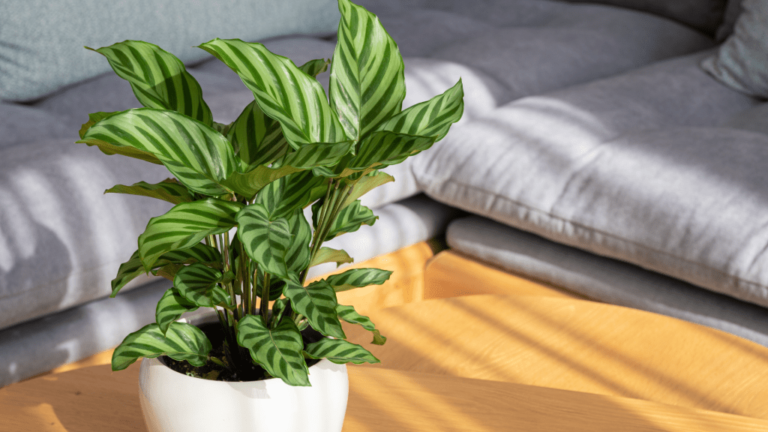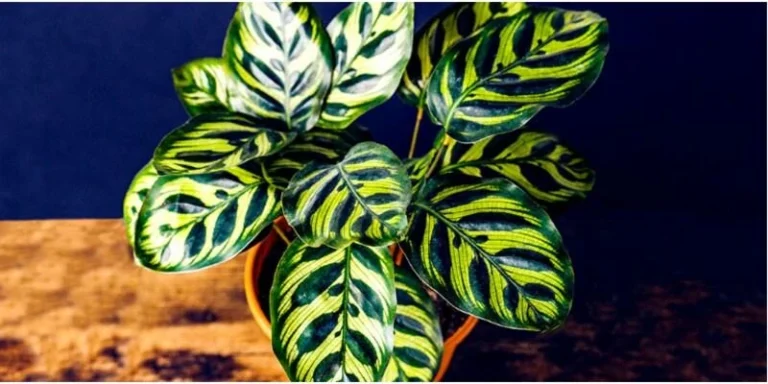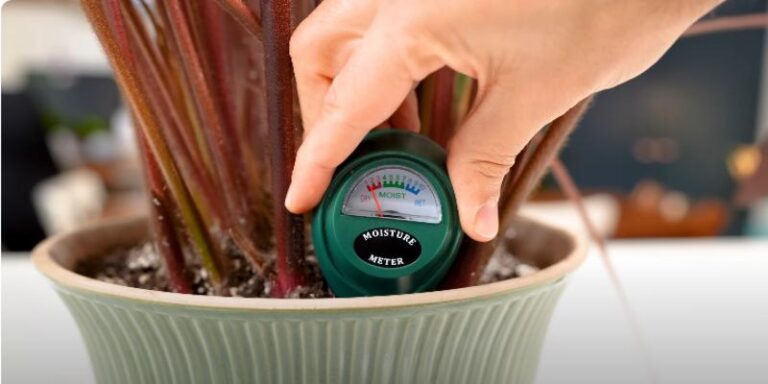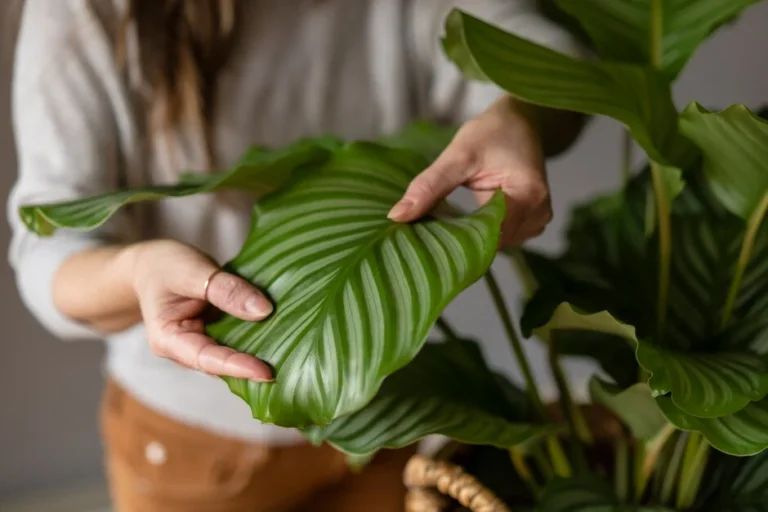When & how to Prune Calathea Plant? Ultimate Pruning Guide
Calatheas are the first choice for indoor gardeners because of their ethereal beauty and deeply colored, stunning foliage. Most Calathea species grow slowly and have a compact, bushy shape when grown indoors, and they don’t require frequent pruning.
However, periodic pruning and trimming of dead and diseased foliage is a must to retain their stunning appearance.
But the question is how to prune Calathea plants to remove brown, crispy edges and yellowing leaves and how much they need to be trimmed.
Prune your Calathea plants at least once or twice yearly using sharp, long-stripped, sterilized scissors or pruning shears.
This guide will help you learn the best time to prune your Calathea beauty, post-pruning care requirements, and the significant benefits of pruning your houseplants.

When to Prune Calathea Plant?
Pruning your Calathea plant is not rocket science, but doing it at the right time is critical. If you get it wrong, you will not be doing your tropical beauty any favors.
Spring and Summer Are the Best Seasons for Pruning
Spring and summer are the go-to seasons for giving your Calathea a trim. This is when the plant is in its growth spurt, so it will regrow quicker than you can say “photosynthesis.”
On the other hand, winter is a nap time for your leafy friend, and pruning could be more of an annoyance than help. But you can remove dead and diseased foliage during this period, and healthier branches will replace them in the growing season.
Remember, less is more. Therefore, expect to trim your tropical houseplant once or twice a season, possibly even less frequently.

Prune Calatheas When They Look Like a Wild Bush
Keep an eye on your plant’s growth. If it produces yellowing leaves and damaged stems and looks more like a wild bush than a sophisticated plant, it’s time to intervene and grab those shears for trimming.

Remember, pruning should be about maintaining that lush, not a complete makeover.
What Are the Tools Needed for Pruning Calathea Plants?
Calatheas are small indoor plants with short and thin stems. It is best to prune them using:
Bonsai Scissors:
Bonsai scissors are an excellent option for pruning larger Calathea varieties, which can reach up to three feet in height. Larger plants have thicker stems that can be difficult to cut off, but a sturdy pair of garden shears can facilitate the process.
Whatever tools you use, sterilize and clean them after every use. Cutting multiple plants with the same shears can spread disease. Therefore, always disinfect by soaking the tools in a solution of 1 part bleach with 9 parts water for at least 30 seconds.
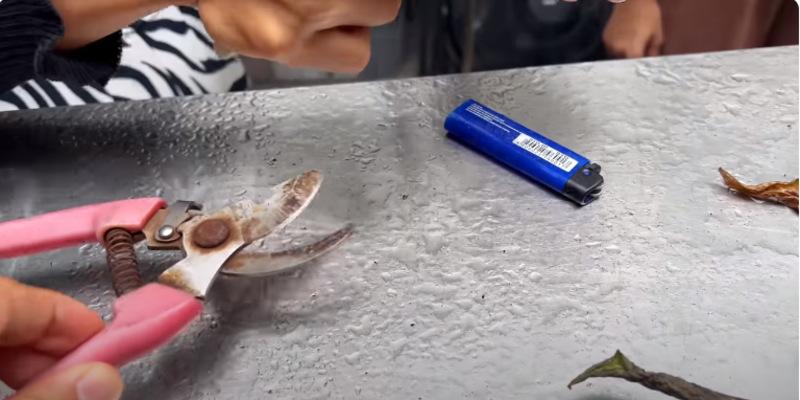
How to Prune Calathea Indoors? Pruning Techniques to Follow
Calathea plants are well-known for their vibrant, beautiful leaves. It’s OK to trim off any fading or colorless leaves and cut leaves that are not dark green. If the leaves turn yellow or brown, they don’t contribute much to the plant’s health.
Here is how to prune Calathea to restore their beautiful green lush.

Don’t cut more than 20% of the plant’s leaves, as they are essential for photosynthesis. Similarly, if the plant already has fewer leaves, remove up to 10% of the foliage only.
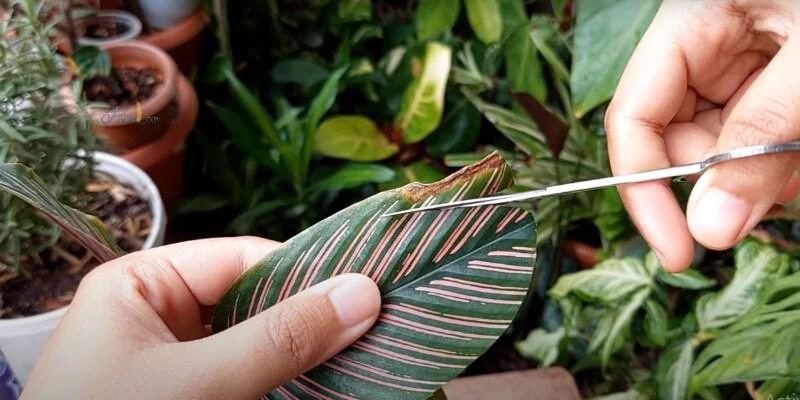
What Are The Common Mistakes to Avoid While Pruning Calathea?
Don’t do the following things while pruning your houseplant:
Best Shape for Calathea After Pruning It for Healthier Growth
Calatea plants grow best when shaped loosely like a mound, shrub, or vase. The houseplants with longer stems work well in general vase shapes. Therefore, you should remove excess foliage to make space for this houseplant, as it improves air circulation and helps avoid fungal attacks.
To facilitate the lower-growing mounded species, you can remove smaller, overlapping leaves under mature leaves. This improves nutrient flow and increases productivity.
Calathea Care After Pruning (Water Them Regularly, Repot Them, and Increase Humidity)
Calathea post-pruning care requires to:
All these factors contribute to a higher Calathea growth rate after pruning. They usually grow 2 feet tall, but some species can grow up to 3-4 feet high.
Thus, treat your Calathea right, and it will be the envy of the plant world.

Also check How to Care for a Calathea Plant?
What Are the Benefits of Pruning Calatheas?
Pruning can be one of the most neglected parts of calathea plant care, and many plant owners may need to become more familiar with it. They consider it only for trees, shrubs, and other plant.
But it works excellently to restore the plant’s vibrant green foliage, and indoor Calathea can reap the following benefits after pruning:
The Bottom Line About Pruning Calathea Houseplants
That’s all about how to prune Calathea!
Calathea plants don’t need frequent pruning or trimming. However, periodic pruning and giving your houseplant a mounded or open vase form will be best to give your plant time to retain its vibrant look.
So, use sterilized scissors to remove the dead or damaged leaves to avoid a stumpy appearance.

About Author
Hi, I’m Emily Davis, a passionate tropical plant enthusiast dedicated to sharing knowledge and expertise with plant lovers. Through his blog, I will provide guides, tips, and tricks for caring for tropical houseplants species like Alocasia, Anthurium, Calathea, Philodendron, Begonia, and many more that will help readers bring a touch of paradise into their own homes. With a deep love for the vibrant colors and lush textures of tropical flora, I’m committed to inspiring others to cultivate their own tropical oasis.

